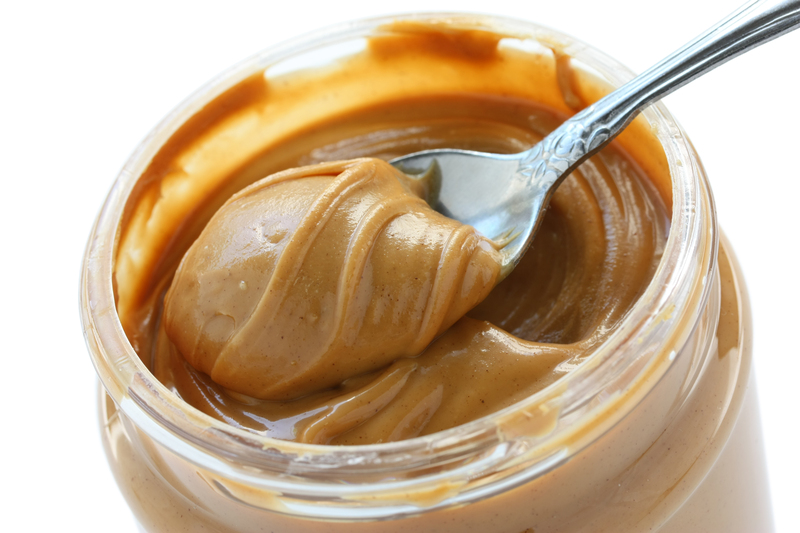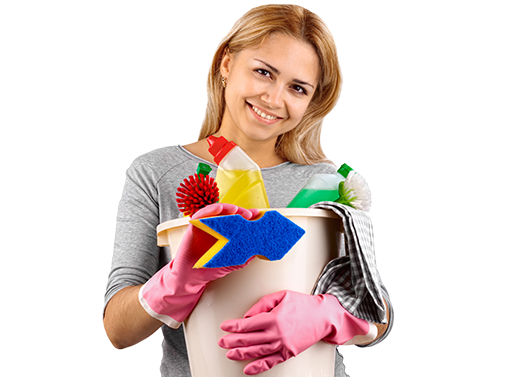Unlock Expert Tips for a Sparkling Clean Stovetop, Free of Burnt-on Mess
Posted on 15/08/2025
Unlock Expert Tips for a Sparkling Clean Stovetop, Free of Burnt-on Mess
A kitchen's heart often rests atop the stovetop, where family meals and culinary creations unfold. Despite our best intentions, spilled sauces and splattered oils can leave your stovetop riddled with stubborn, burnt-on messes that detract from its shine and cleanliness. But don't worry--achieving a sparkling clean stovetop, free of even the toughest burnt-on mess, is entirely possible with the right know-how and a few pro tips. This comprehensive guide delves into expert cleaning hacks, maintenance routines, and natural remedies so you can reclaim a gleaming cooking surface.

Why a Clean Stovetop Matters
A clean stovetop isn't just about appearance. It's pivotal for safety, functionality, and maintaining the lifespan of your cooking appliance. Over time, burnt-on debris can become a fire hazard, cause unpleasant odors, and even affect the taste of your food. Plus, a spotless stove elevates your entire kitchen's look, making cooking more enjoyable.
- Reduces Fire Hazards: Leftover grease and burnt food can ignite unexpectedly.
- Prevents Contamination: Old, burnt food can harbor bacteria and taint fresh meals.
- Prolongs Appliance Life: Regular cleaning reduces wear and tear on burners and surfaces.
- Enhances Cooking Efficiency: Clean burners heat more evenly and reliably.
Common Causes of Burnt-on Messes
Understanding why messes get burnt onto your stovetop helps you prevent them. Here are the main culprits:
- Boil-overs: Liquids like soups, sauces, and pasta water often overflow and instantly harden on hot surfaces.
- Splatter: Frying foods or sauteing with oil can leave spots that bake on quickly.
- Spills Left Untreated: The longer they sit, the harder burnt-on stains become to remove.
- High Heat Cooking: Using maximum heat can quickly carbonize food residues.
Expert Advice for Preventing Burnt-on Stove Messes
- Always use lids when boiling or simmering to contain potential splatters and boil-overs.
- Clean as you go--quickly wipe small spills before they harden.
- Keep burners at moderate temperatures unless high heat is essential.
- Use larger pans to reduce spill risks when cooking large quantities.
Know Your Stovetop: Cleaning Tips by Type
Stovetops come in several varieties, each requiring slightly different care for optimal, mess-free cleaning:
1. Gas Stovetops
- Grates and Burners: Remove and soak in hot, soapy water before scrubbing.
- Use a soft brush or sponge to dislodge stubborn bits.
- Wipe the surface using a degreaser or a homemade mixture (see below).
2. Electric Coil Stoves
- Lift the coils and rinse pans underneath.
- Unplug coils and wipe with a damp cloth (ensure thoroughly dry before reassembling).
- Treat spills immediately to avoid baked-on mess.
3. Glass and Ceramic Cooktops
- Allow the surface to cool before cleaning.
- Use a non-abrasive cleaner or a specialized cooktop cream.
- For heavy stains, use a razor blade scraper held at a 45-degree angle, gently lifting away debris.
Step-by-Step Process: How to Clean a Burnt-on Stovetop
1. Gather Your Supplies
Before starting, assemble the following:
- Baking soda
- White vinegar
- Lemon juice
- Dish soap
- Non-scratch sponges or cloths
- Old toothbrush or soft-bristle brush
- Plastic or silicone scraper
- Paper towels or microfiber cloths
- (Optional) Commercial stovetop cleaner
2. Initial Wipe Down
Allow the stovetop to cool completely. Remove grates and any detachable components. Wipe away loose debris with a dry paper towel.
3. Apply a Degreasing Solution
- Mix equal parts water and dish soap or use a specialized stovetop spray cleaner.
- Apply liberally to the messy areas and let it sit for 5-10 minutes.
4. Baking Soda & Vinegar Magic
- Sprinkle a generous layer of baking soda over the burnt-on stains.
- Spray or pour a small amount of vinegar--watch the fizzing action lift the grime!
- Allow it to sit for another 10-15 minutes.Pro tip: Cover really tough spots with a damp towel to keep the mixture moist and active.
5. Scrub Away Residues
- Gently scrub with a non-scratch sponge or old toothbrush, focusing on burnt areas.
- Use a plastic scraper for any remaining, stubborn spots--never metal, which could scratch the surface.
6. Rinse & Final Polish
- Wipe clean with a damp microfiber cloth, rinsing thoroughly to remove any residue.
- Buff dry with a fresh cloth for a streak-free, mirror-like shine.
Natural Cleaning Solutions for a Gleaming Stove
Prefer to avoid harsh chemicals? Many experts recommend simple, natural ingredients you likely already have at home. Here are some tested solutions for a spotless, burnt-on stain-free stovetop:
1. Baking Soda & Lemon Paste
- Mix 2 parts baking soda with 1 part lemon juice to form a paste.
- Apply to stains, let sit for 15 minutes, then scrub and rinse.
2. Vinegar Spray
- Fill a spray bottle with equal parts white vinegar & water.
- Spritz on the stovetop for daily degreasing and odor removal.
3. Salt for Extra Abrasive Power
- Mix coarse salt with a few drops of dish soap and gently rub over stubborn crusts.
Tips for Ongoing Stovetop Maintenance
- Wipe Daily: Make it a habit to clean your stovetop after every use to prevent buildup.
- Clean Spills Immediately: Act quickly--fresh spills are easier to remove.
- Use Burner Liners: Protect surfaces with disposable or reusable liners for easy cleanup.
- Monthly Deep Clean: Disassemble parts and soak for a more thorough clean every month.
- Polish glass or ceramic surfaces with a dedicated cleaner for lasting shine and protection.
Troubleshooting the Toughest Stovetop Stains
Some messes are especially stubborn. Try these expert techniques:
- Burnt Sugar: Lay a hot, damp towel on top to soften. Scrape gently after 10 minutes.
- Grease Buildup: Use a mixture of baking soda and vinegar, or a degreasing cleaner formulated for stovetops.
- Discoloration: Mix equal parts vinegar and water, boil gently if on removable parts, then scrub.
- Cloudy Marks (Glass Tops): Buff with a paste of baking soda and water, then polish with a clean, dry cloth.
Expert-Recommended Commercial Cleaners
- Bar Keepers Friend
Exceptional for glass, ceramic, and metal surfaces--removes stubborn stains without scratches. - Weiman Cooktop Cleaner
Specifically formulated for glass tops, providing a brilliant finish. - Easy-Off Spray
A powerful solution for grease and burnt-on food--especially on metal components.
Always test commercial products on a small area before broad application and follow manufacturer guidelines for your specific stove model.
How to Maintain a Burnt-on Mess-Free Stovetop Year-Round
- Immediate Action: Clean spills as soon as the stovetop cools.
- Use Splatter Guards: Prevent sauce and oil splashes from reaching burners.
- Steam Clean: Place a pot of water on 'high' to generate steam--loosen food particles for easy wipe-down (for suitable stove types).
- Stick to a Schedule: Set reminders for weekly and monthly maintenance cleaning.
- Educate Household Members: Share these tips with everyone who uses the kitchen for consistent cleanliness.

Conclusion: Your Stovetop, Always Spotless
A spotless stovetop, free of burnt-on mess, doesn't need to be a dream reserved for commercials or newly installed kitchens. With a little vigilance and the right cleaning strategies, you can restore and maintain the brilliance of your cooking space. Regular upkeep, immediate action on spills, and smart use of both natural and commercial products are the keys to unlocking a sparkling clean stovetop every day.
From expert prevention tips to remedies for even the most stubborn burnt messes, your path to a gleaming kitchen is well within reach. Start with today's cleaning and watch your stovetop transform--inviting, safe, and always ready for your next delicious masterpiece.
Frequently Asked Questions: Stovetop Cleaning
How often should I deep clean my stovetop?
For most kitchens, a monthly deep clean is ideal, paired with a light daily wipe-down after cooking.
Can I use bleach on my stovetop?
Avoid using bleach, as it can damage surfaces and leave harmful residues. Opt for gentler cleaners or specialized stovetop products.
Is it safe to use a razor blade on glass cooktops?
Yes, but always use a fresh blade, keep it almost flat (45 degrees), and move gently to avoid scratching.
What's the best way to prevent burnt-on mess in the future?
Act quickly on spills, use splatter guards or burner liners, and stick to a regular cleaning routine for consistently spotless results.
With these expert stovetop cleaning tips, you'll never have to dread burnt-on messes again. Unlock the secret to a stunning, sparkling clean stovetop and enjoy a kitchen that's as welcoming as your home-cooked meals!



